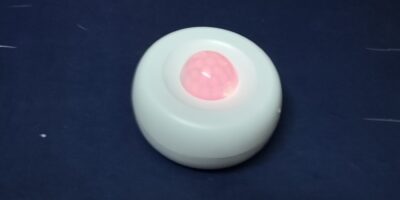
When we think of self-driving vehicles, we tend to lump all of them together – or at least all the companies currently working on the technology. The first name many think of is Tesla, but this has rival balking. Waymo wants potential buyers to know that Tesla is “no competitor at all” when it comes to autonomous vehicles.
Waymo’s Statement
Seemingly every technology company and auto manufacturer has been throwing their hats in the ring to join the impending autonomous vehicle business. Tesla was the first to hit the market, but Waymo CEO John Krafcik doesn’t believe it’s a fair comparison.
Parent company Alphabet owns Google as well as Waymo, which was renamed in 2016 after the company had spent several years developing its driverless system. Krafcik made his comments about Tesla, whose CEO is Elon Musk, in an interview with Germany’s Manager Magazin.

Krafcik said Tesla is working on a “really good driver assistance system,” adding that his company “manufacture(s) a completely autonomous driving system.”
According to Ars Technica, Krafcik added, “For us, Tesla is not a competitor at all.” He further stipulated: “We manufacturer a completely autonomous driving system.”
Tesla says of its Autopilot feature that it’s the future of self-driving vehicles “in almost all circumstances.” The system includes eight cameras with visibility of 360 degrees, 12 sensors, and a forward-facing radar.

Waymo further distances itself in a blog post by stating, “We’re hopeful that consistency will help differentiate the fully autonomous technology Waymo is developing from driver-assist technologies (sometimes erroneously referred to as ‘self-driving’ technologies) that require oversight from licensed human drivers for safe operation.”
Self-Driving vs. Autonomous
Without mentioning Tesla by name, earlier in January, Waymo said, “Unfortunately, we see that some automakers use the term ‘self-driving’ in an inaccurate way, giving consumers and the general public a false impression of the capabilities of driver assist (not fully autonomous) technology.”
Because of this, Waymo announced it would be using “more deliberate language” for its own line that it would now describe as “autonomous driving.”

“It may seem like a small change, but it’s an important one because precision in language matters and could save lives,” the company said in a blog post. “We’re hopeful that consistency will help differentiate the fully autonomous technology Waymo is developing from driver-assist technologies (sometimes erroneously referred to as ‘self-driving’ technologies) that require oversight from licensed human drivers for safe operation.”
The need to distance itself could be borne out of a desire to not be lumped together with Tesla after a few well-publicized accidents, with some due to drivers not having their eyes on the road and leaving all operation to the Tesla Autopilot feature. Additionally, the National Highway Traffic Safety Administration has stated that “no vehicle available for purchase today is capable of driving itself.”
Waymo said of the false impression that Autopilot can handle the driving completely on its own that it “can lead someone to unknowingly take risks (like taking their hands off the steering wheel) that could jeopardize not only their own safety but the safety of people around them.”
Read on to learn about Waymo getting permission to deploy driverless cars in California and when it announced it would start using autonomous cars without safety drivers late in 2019.
Image Credit: Waymo Press and public domain







